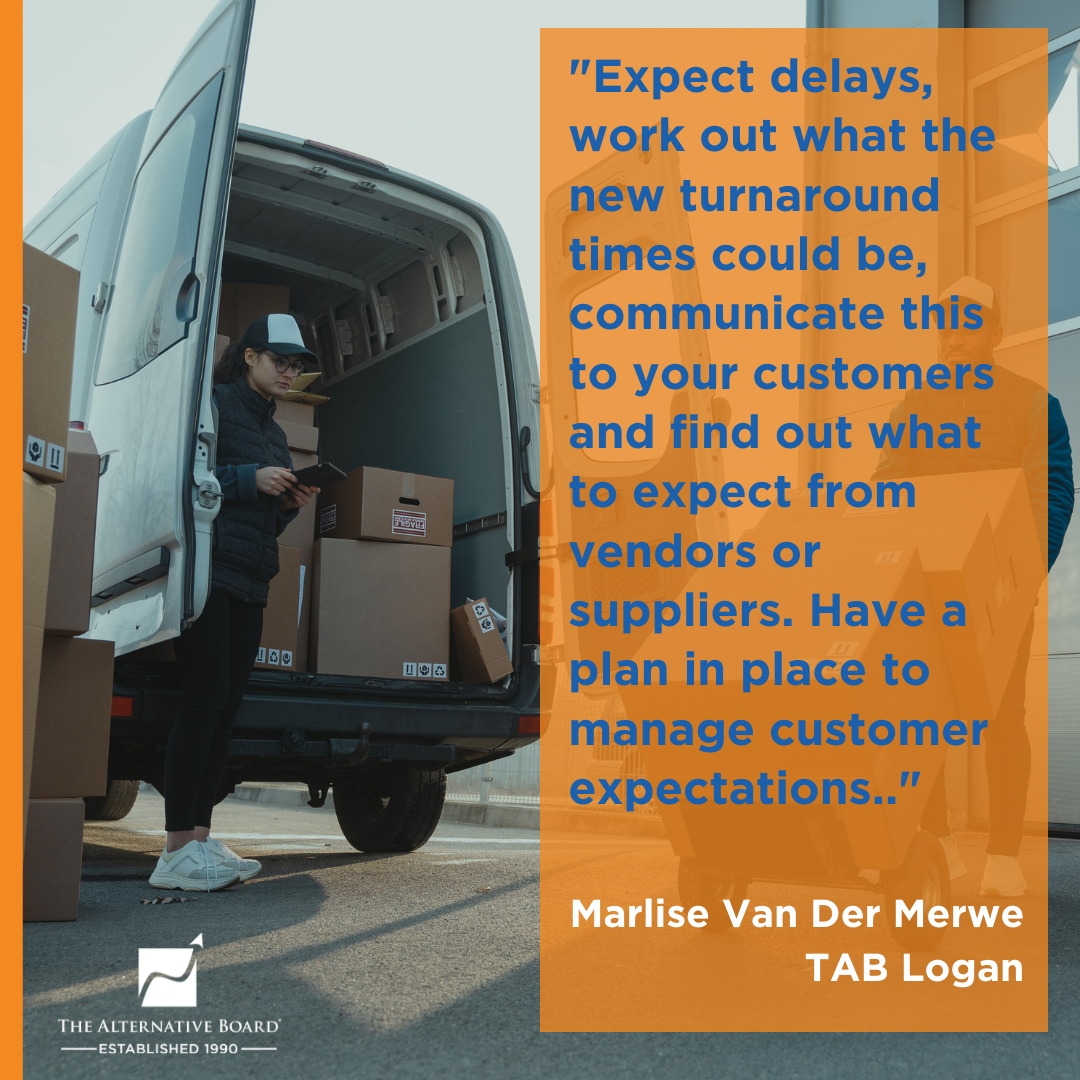Supply chain issues are top of mind for many Australians at the moment, whether as a business owner struggling to get the product or a consumer looking to fill a trolley at a supermarket.
Industries are beginning to see the ill effects of supply chain issues that have been causing operations to come to a halt. With staff being sick, testing positive for COVID-19 or isolating after coming into contact, abattoirs and processing facilities’ working conditions are tough – they’re having to make do with next-to-no-staff or, they’re closed. This is proving to be detrimental to both businesses as well as consumers since it’s causing a gap in the market.
As reported by ABC News, supermarket giant Coles has brought in purchasing limits on meat products across the NSW to effectively combat meat shortages that are taking place. Patrick Hutchinson, CEO of the Australian Meat Industry Council, explained how workers falling sick resulted in major supply chain disruptions, which then led to bare shelves. The Industry Council reportedly put in a request with the government to allow asymptomatic staff members to return to work to avoid further damage in operations.
It’s no surprise that this problem is only set to rise in the coming weeks. Jim Stanford, member of Centre for Future Work, believes that almost one-third of workers in NSW are likely to be in isolation over the coming weeks. Not only are consumer-based industries suffering, but worker shortages are also affecting industries based within essential services such as healthcare, childcare centres as well as aged-care.
Read – Peer Advisory Boards: How They Can Help Your Business
The automotive industry affected

Another industry that’s been largely affected is the automotive industry, and it continues to struggle nearly two years from when it was first hit. Since the world, in a way, closed down, naturally, car manufacturers slowed down production, assuming there would be a dip in the demand. However, the dip was only short-lived as soon after, car sales went through the roof.
As vehicle sales went up, supply became harder to catch up with – this was due to a shortage of semiconductors which are computer microchips that go in cars. When COVID-19 first hit, a large number of people began working from home which caused an increase in sales of TVs, laptops, and mobile phones. The increase demanded more microchips to be produced, as the same went into the electronic devices as well and manufacturers were not looking to have their sales disrupted.
Ben Davis, Managing Director of Trucks’N’Toys, shares his business’s struggles. “We had taken plenty of new vehicle orders for new builds which never actually eventuated with the factories not being able to actually build the vehicles.”
Vehicle manufacturers continue to find it difficult to meet the demands of consumers as the number of microchips being produced is far less compared to the cars being manufactured, causing a massive shortfall in new vehicles being built.
Marlise van der Merwe, co-owner of The Alternative Board Logan, shares insight on COVID-19 caused several challenges for car rentals as well. For starters, several products and services were cancelled due to the demand being influenced by lockdowns. Car rentals and the tourism industry, for example, took quite a blow. When lockdowns were imposed, people could no longer travel and were forced to cancel their holidays and tours. This resulted in car rental businesses having to sell off their fleet in order to make up for losses.
As travel restrictions were eased, businesses did not expect the tourism industry to bounce back at the scale that it did, which further caused issues to car rental businesses. Since they’d sold their fleet, they did not have enough time to replenish it, nor did they have the funds to afford an order so massive. To add to this, their orders went into a backlog as car manufacturers had stopped manufacturing cars, which caused a knock-on effect when demand picked up.
Import and export issues
Another freight strain has emerged – a shortage of shipping containers. Since the import/export ratio was not equal, empty import containers had to be stacked at ports, and because exports were lesser in quantity, the containers were not returned to locations that needed them the most. This not only resulted in a shortage of containers but also caused shipping costs to go through the roof.
Marlise also explains a similar situation took place due to the cancelled flights. “Products with a short shelf-life span used to be distributed by sending goods via passenger aircraft in the cargo hold, which in turn got them quicker to the required locations. With airlines cancelling their international flights, the situation further worsened.”
“In short, the shutdown of factories/manufacturing in certain industries had a knock-on effect on the supply, when restrictions and movements were allowed again. It takes a while for these manufacturers to get to full capacity again and then to fulfil the demand, causing delays,” she concludes.
What is the government doing to help?
With a significant number of employees being unavailable awaiting test results or because they had been exposed to someone with the virus, there has been a popular plea among industries for better access to rapid antigen testing kits – enabling quicker, more efficient results and with that, a less damaging staffing issue. As RATs become more available, the supply chain strain should recede somewhat locally.
The federal government has also reduced isolation requirements for the transport industry.
Recent reports suggest that the national cabinet has made amendments to the previous requirement wherein those workers exposed to others with COVID-19, had to isolate themselves for seven days. Essential industries have been now named, whose workers are exempt from their requirement.
Workers in emergency and healthcare services, food manufacturing and production, education, utilities, and transport, are required to simply take a rapid test every second day until the sixth day from exposure and have to isolate themselves only once they develop symptoms.
Whether this is the right approach or not can be argued, however, several business owners agree that the change in requirements has been a huge relief.
How can your business overcome these challenges?
Derek Lundberg from Hunter Valley region TAB says: “It is a very difficult situation obviously as there is so much that is unknown.
“There is no other way to describe it than to say it is a mess, the usual rules do not apply.”
His key tips and the best response to your questions would be:
- If you have a good relationship with your supplier, leverage that as best you can. It may or may not get you stock or some stock, but it certainly will be the best way to understand what and when you can expect supply.
- Search for alternative sources and look for perhaps the obscure sources that may surprise you. Don’t give up on your search right now.
Manage expectations
Crystal Petzer, owner and director of TAB Pittwater, despite the chaos shares some positives that she’s seen with the rise of COVID-19 and supply chain issues. “I think people are more understanding now that there’s a delay or since products are just coming in slower, so they’re happier to go on a waiting list or paying extra. Therefore, having that relationship where there’s someone ready to give you that order or have someone who can help you out that extra bit – this is when, if you’ve got good connections with your supply chain, this is the time it’s going to come through.”
Much like Derek, Crystal recommends having (or establishing) a good relationship with your supplier. “’Definitely use this time to have your connection get products in or use them to get products manufactured quicker,” she explains. “And if you don’t have connections then it’s time to build some connections for the same,” she adds.
Invest in AI
Crystal also believes it’s time businesses start looking at alternative options that make their operations more efficient. “You need to introduce Artificial Intelligence (AI) software for supply chain management which makes things faster. This would be a good time to partner with people who have new software or use AI already – it would be great for you if you were to work and grow with them.”
“This just is the future. You see it with big companies; everyone’s using AI and all these other software already. If smaller companies want to start competing, they need to get smarter and more agile, otherwise big companies will only get bigger and you will get steamrolled,” she says.
Marlise, even while understanding how problems and solutions are unique to each business and industry, still suggests a few ways you could make the current situation and all the issues that arise with it, easier.
“Firstly, knowing what your key stock or components are can really help you determine turnaround times, know the cost of implications and can help you with making orders well in advance. Second, knowing where you stand as a business in terms of operations and staff, can help you improve recruitment strategies, and consider alternative work schedules. This is done to identify problems and solve challenges in those areas.”
Communicate with suppliers and consumers
Going out of your way to communicate will help dull the blow to the business. Tim Horbury, owner and director of TAB Adelaide, suggests going out of your way to communicate with all key suppliers to ensure you stay on track with supply, logistics with drivers and that he gets loads of multiple orders where possible, and being up front with consumers from the get go.
“Strong communication skills to have a better understanding of the situation, and being in front of the queue through these actions will help ease the matter for your business,” he says.
Need help with your supply chain? Get in touch with The Alternative Board to learn how we can help.
Oops! We could not locate your form.


